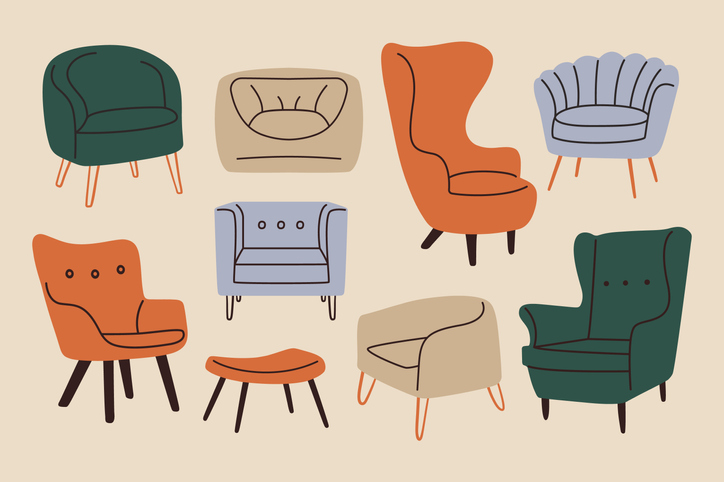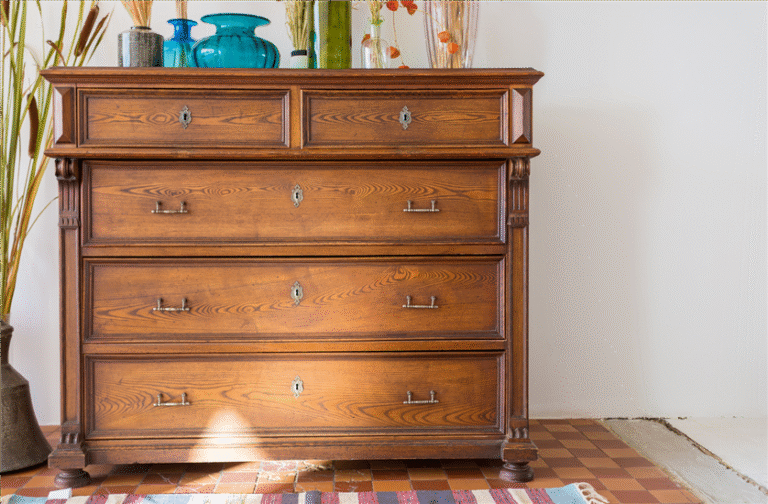The Difference Between Vintage Antique And Retro Furniture
Ever found yourself puzzled by the terms vintage, antique, and retro when shopping for furniture? You’re not alone.
These words often get tossed around, leaving you wondering what they actually mean. Understanding the differences isn’t just about mastering lingo; it’s about making informed choices for your home. Do you want your living space to reflect a specific era, or are you simply intrigued by the stories these pieces hold?
By the end of this article, you’ll confidently navigate the world of furniture, ensuring that your choices not only match your style but also resonate with the history and charm each piece brings. Ready to transform your space with knowledge? Let’s dive in and unravel these fascinating terms together.

Credit: charitychic.wordpress.com
Vintage Furniture
Vintage furniture reflects timeless charm and craftsmanship. Distinguishing between vintage, antique, and retro styles involves understanding age and design. Antique pieces are over 100 years old, vintage items range from 20 to 100 years, while retro furniture imitates past trends.
Each category offers unique historical and aesthetic value.
Vintage furniture holds a special place in the hearts of many design enthusiasts. This type of furniture is typically characterized by its age and charm, often bringing a sense of nostalgia. Whether you’re a seasoned collector or a curious beginner, understanding vintage furniture can add depth to your decor choices.Characteristics Of Vintage Pieces
Vintage furniture refers to pieces that are at least 20 years old but less than 100 years old. These items are often well-crafted, showcasing quality materials and unique designs. One of the main draws is their story—each piece carries a history that adds character to your space. You’ll often find that vintage furniture includes natural wear and tear, like patina or faded colors, which only enhance its appeal. This natural aging process gives each piece a one-of-a-kind look that can’t be replicated by new items. Do you have a vintage item that has become a conversation starter in your home? These characteristics often spark curiosity and admiration from guests.Popular Vintage Styles
Some of the most sought-after vintage styles include Mid-century Modern, Art Deco, and Industrial. Mid-century Modern furniture, for instance, is known for its clean lines and functional design, making it a favorite among minimalists. Art Deco, with its bold geometric patterns, adds a touch of luxury and glamour to any space. Industrial style, often featuring raw materials like metal and wood, brings a rugged, urban feel. Each of these styles offers something unique, allowing you to find pieces that resonate with your personal taste and home decor. Which vintage style speaks to you? Exploring these styles can be an exciting journey into the past.How To Identify Vintage Furniture
Identifying vintage furniture can be a rewarding challenge. Start by examining the construction—vintage pieces often have dovetail joints and solid wood, indicating quality craftsmanship. Look for labels or stamps that may reveal the manufacturer or the era it was made. Pay attention to the hardware, such as handles and knobs, as these can provide clues about the piece’s age. Researching design features common in certain decades can also guide you in determining whether a piece is truly vintage. Have you ever wondered if a piece you own is vintage? Taking these steps can help you unlock the history behind your furniture.Antique Furniture
Antique furniture refers to pieces over 100 years old, vintage items are between 20 and 100 years old. Retro furniture, on the other hand, imitates styles from the past but is made more recently. Understanding these differences helps in selecting the right piece for your home.
Antique furniture holds a unique allure that captivates both the casual admirer and the seasoned collector. Its beauty lies in its age, craftsmanship, and the stories it whispers from the past. But what truly defines an antique piece, and how can you be sure that what you’re buying is the real deal?Defining Antique Furniture
Antique furniture is typically defined as pieces that are at least 100 years old. This age requirement distinguishes them from vintage or retro items, which are newer. An antique is not just about age, though; it reflects the craftsmanship and style of its time. Consider that rocking chair in your grandparent’s attic. If it was crafted in the early 1900s, it’s not just old furniture; it’s an antique. This kind of furniture often showcases intricate handiwork and durable materials, setting it apart from mass-produced items.Historical Significance
Antique furniture offers a tangible connection to history. Each piece tells a story of the era it was crafted in, reflecting the social and economic circumstances of its time. This historical significance is a major draw for collectors and enthusiasts. Think about a Victorian-era table. It might have been the centerpiece of a family gathering over a century ago. Such pieces allow you to own a slice of history, adding depth and character to your home.Spotting Authentic Antiques
Identifying genuine antiques requires a keen eye and some knowledge. Look for signs of age, such as wear on the edges or patina on the surface. Craftsmanship details like hand-carved patterns and dovetail joints are often indicators of authenticity. During a visit to an antique market, I once spotted a beautifully carved dresser. The intricate details and slight imperfections convinced me of its authenticity. Always trust your instincts and do your research before making a purchase. Are you ready to start your antique furniture journey? Remember, each piece is more than just furniture; it’s a glimpse into the past, waiting to enrich your living space with its story.Retro Furniture
Retro furniture brings a nostalgic charm to any space. It captures the essence of past decades with modern flair. Retro pieces often feature bold colors, unique designs, and playful aesthetics. These elements reflect the optimism and creativity of bygone eras. Retro furniture celebrates the fun and exuberance of mid-20th century design.
Retro Design Elements
Retro design elements include vibrant hues, geometric shapes, and glossy finishes. Bold patterns and textures are often seen in upholstery. Plastic and metal were popular materials. Curved lines and funky motifs add character. Retro furniture focuses on comfort and style.
Decades Of Influence
Retro furniture draws inspiration from the 1950s, 60s, and 70s. Each decade contributes unique styles. The 50s introduced sleek lines and pastel colors. The 60s embraced psychedelic patterns and bright shades. The 70s brought earth tones and bohemian vibes.
Identifying Retro Furniture
Identifying retro furniture involves looking at key features. Bright colors and playful shapes are common. Check the materials used. Plastic and metal indicate retro origins. Look for bold patterns and unique designs. Retro furniture often has a distinctive charm.

Credit: aceofficesystems.com
Comparing Styles
When you walk into a room, the furniture speaks volumes about the era it belongs to. But how do you distinguish between vintage, antique, and retro styles? Each has unique characteristics that reflect their time. Let’s dive into the elements that make each style stand out.
Materials And Craftsmanship
Antique furniture often boasts materials like solid wood and intricate carvings, showcasing the handiwork of skilled artisans. Imagine a Victorian oak cabinet, its details whispering tales from centuries ago.
Vintage furniture, typically from the mid-20th century, uses a mix of wood, metal, and sometimes plastic. Picture a sleek 1960s teak chair, combining function and form effortlessly.
Retro pieces, often inspired by designs from the 1950s to 1980s, embrace bold colors and synthetic materials. Think of a funky plastic armchair in bright orange—it’s a nod to pop culture.
Design Trends Through Time
Antique designs carry the essence of historical periods—Baroque, Rococo, or Georgian. Their elegance and complexity cater to those who appreciate history.
Vintage furniture reflects the evolution of design, from Art Deco to Mid-Century Modern, offering a nostalgic glimpse into past decades. It can be like finding your grandmother’s 1950s lamp, a piece that feels familiar yet stylish.
Retro designs are playful and eclectic, often reviving past trends with a modern twist. They bring a sense of fun and spontaneity to your space.
Market Value And Collectibility
Antiques can be quite valuable, especially if they are rare or in excellent condition. They appeal to collectors who cherish historical significance.
Vintage items often hold sentimental value and can be affordable, making them accessible to a wider audience. They are a treasure trove for those who love classic styles without breaking the bank.
Retro pieces might not fetch high prices, but their quirky charm can add personality to your decor. They are perfect for those who enjoy experimenting with bold looks.
So, when you choose furniture for your home, ask yourself: what story do you want your space to tell? Each style—antique, vintage, or retro—offers a unique narrative. Which one aligns with your personal taste?
Decorating With Vintage, Antique, And Retro
Decorating with vintage, antique, and retro furniture adds charm to spaces. Each style offers unique character and history. Mixing these pieces brings a timeless feel to your home. Understanding their differences helps create a cohesive look.
Mixing Styles In Modern Spaces
Blend old and new for a fresh look. Vintage pieces add warmth to modern rooms. Antique furniture brings elegance and a sense of history. Retro items inject fun and color into your decor. Balance is key. Mix textures and colors to create harmony.
Caring For Different Types Of Furniture
Proper care preserves the beauty of your pieces. Dust antiques with a soft cloth. Avoid harsh chemicals on vintage wood. Retro items may need special cleaning solutions. Regular maintenance keeps furniture looking its best.
Finding Pieces For Your Home
Explore various places to find unique furniture. Thrift stores and flea markets offer hidden gems. Online marketplaces provide a wide range of choices. Attend estate sales for rare antique finds. Choose pieces that fit your style and space.

Credit: www.laurelcrown.com
Frequently Asked Questions
What Defines Vintage Furniture?
Vintage furniture refers to pieces that are 20 to 99 years old. They often reflect the design trends of their era. Vintage items are cherished for their timeless appeal and quality craftsmanship. They are more accessible than antiques and add character to modern interiors.
How Is Antique Furniture Different From Vintage?
Antique furniture is at least 100 years old, unlike vintage pieces. Antiques often hold historical significance and are highly valued. They showcase superior craftsmanship and unique designs. Collectors and enthusiasts prize them for their rarity and cultural importance.
What Is Considered Retro Furniture?
Retro furniture refers to pieces that imitate styles from the recent past. Typically, retro covers designs from the 1950s to 1980s. These items evoke nostalgia and are often playful in design. Retro pieces are popular for their vibrant colors and bold patterns.
Why Choose Vintage Over Antique Furniture?
Vintage furniture offers a blend of style and affordability. They are less expensive than antiques yet possess historical charm. Vintage pieces fit seamlessly into contemporary spaces. They offer a sustainable choice by reusing high-quality materials.
Conclusion
Choosing between vintage, antique, and retro furniture can seem tricky. Each style has its own charm and story. Vintage pieces bring nostalgia from decades past. Antique furniture offers a glimpse into history, often over 100 years old. Retro styles echo the fun and bold designs of mid-20th century.
Understanding these differences helps in making a choice. It also adds personal touch to your space. Remember, each piece can transform your home. Reflect your personality. Create a unique atmosphere. So, explore these styles. Find what resonates with you. Make your space truly yours.

